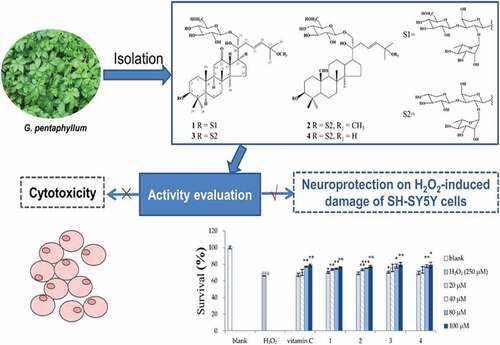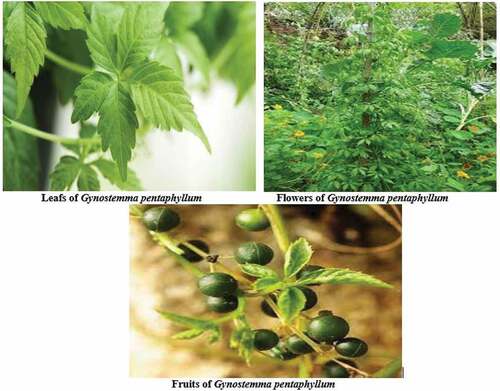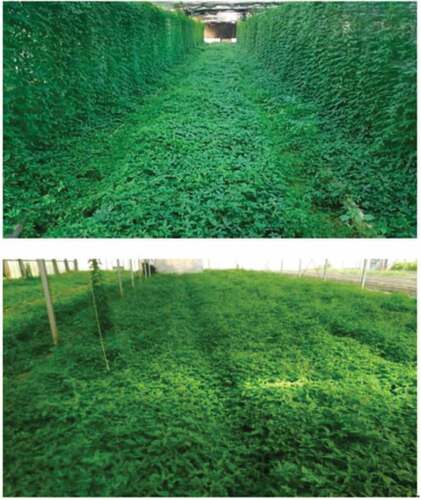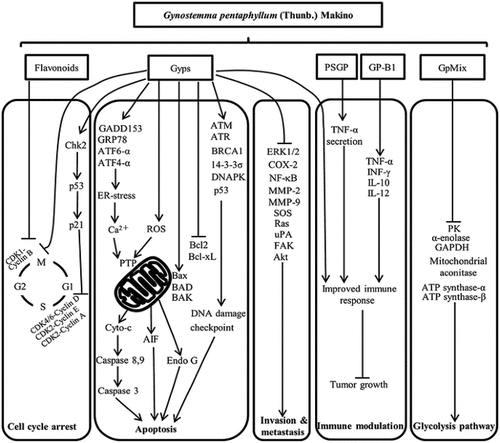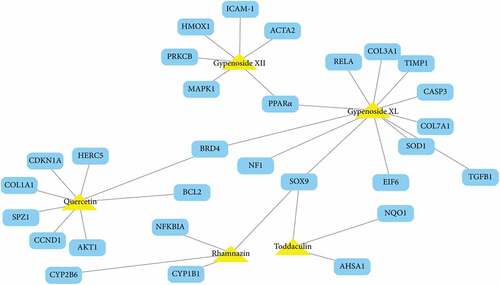Figures & data
Table 1. Taxonomic Hierarchy of Gynostemma pentaphyllum.
Table 2. Dammarane-type saponin structures in G. pentaphyllum.
Figure 3. G. pentaphyllum dammarane skeleton with characteristic linkages.
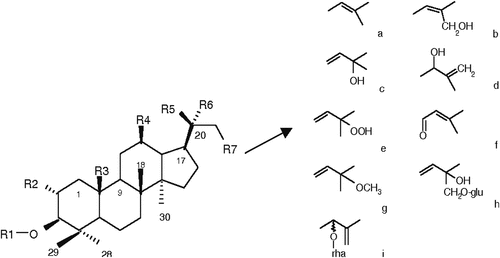
Figure 4. G. pentaphyllum cyclopentenone (j) and epoxy dammarane-type glycosides.
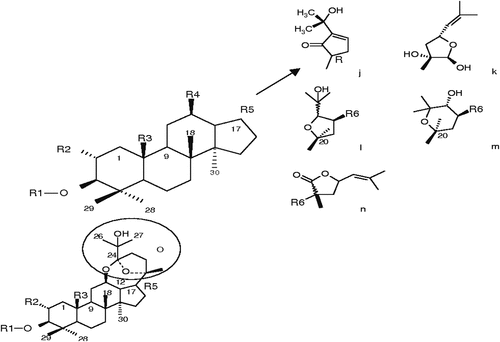
Table 3. G. pentaphyllum cyclopentenone and epoxy dammarane-type glycoside compounds.
Figure 6. The mechanism through which gypenosides reduce inflammatory reactions.
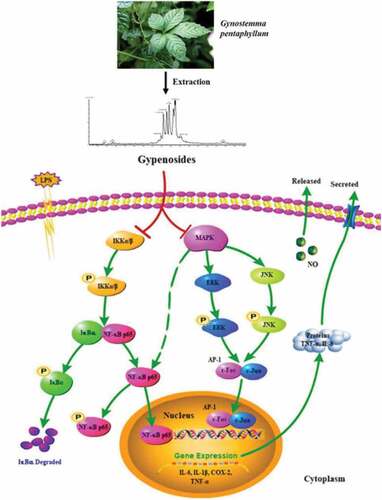
Figure 7. Mode of action of polysaccharides from Gynostemma pentaphyllum’s antioxidant and immunomodulatory capabilities.
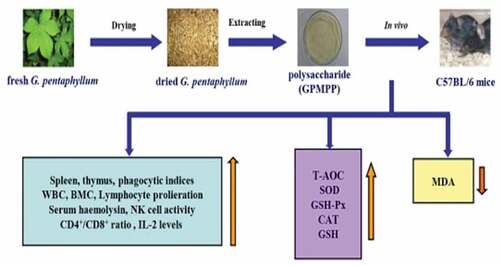
Figure 8. (a). NALFD is part of a compound-target network. The yellow triangles indicate active G. pentaphyllum compounds, whereas the blue rectangles reflect probable NAFLD target genes, with the gray line representing the compound-target relationship. Source: Shang et al.[Citation107] (b). The six possible anti-NAFLD compounds from G. pentaphyllum and their matching chemical compositions.
![Figure 8. (a). NALFD is part of a compound-target network. The yellow triangles indicate active G. pentaphyllum compounds, whereas the blue rectangles reflect probable NAFLD target genes, with the gray line representing the compound-target relationship. Source: Shang et al.[Citation107] (b). The six possible anti-NAFLD compounds from G. pentaphyllum and their matching chemical compositions.](/cms/asset/e19ca7f2-11fe-4596-aa90-481cdbe81c4e/ljfp_a_2185566_f0008b_oc.jpg)
Figure 9. The neuro-protective influence of Gynostemma pentaphyllum is depicted graphically.
